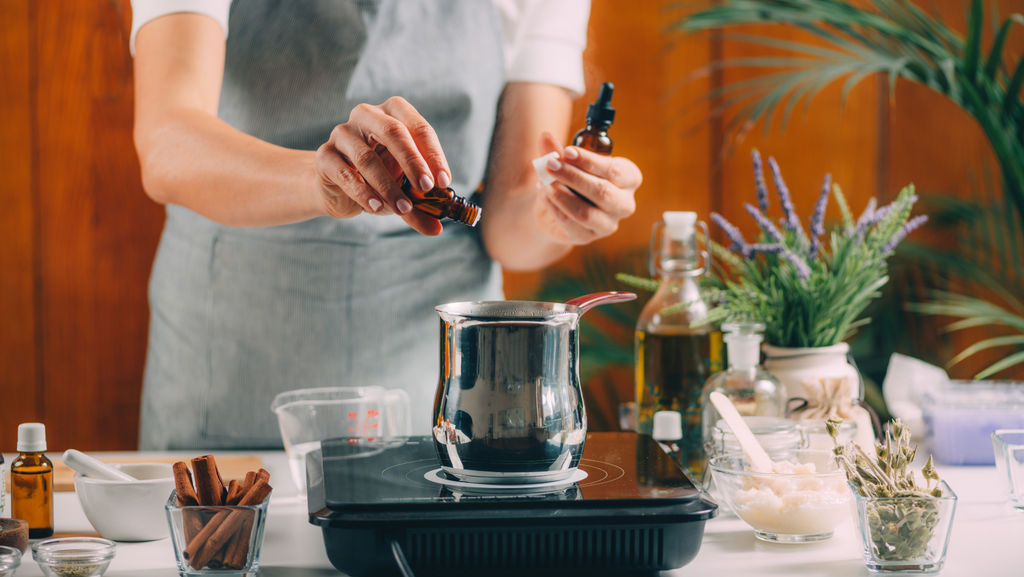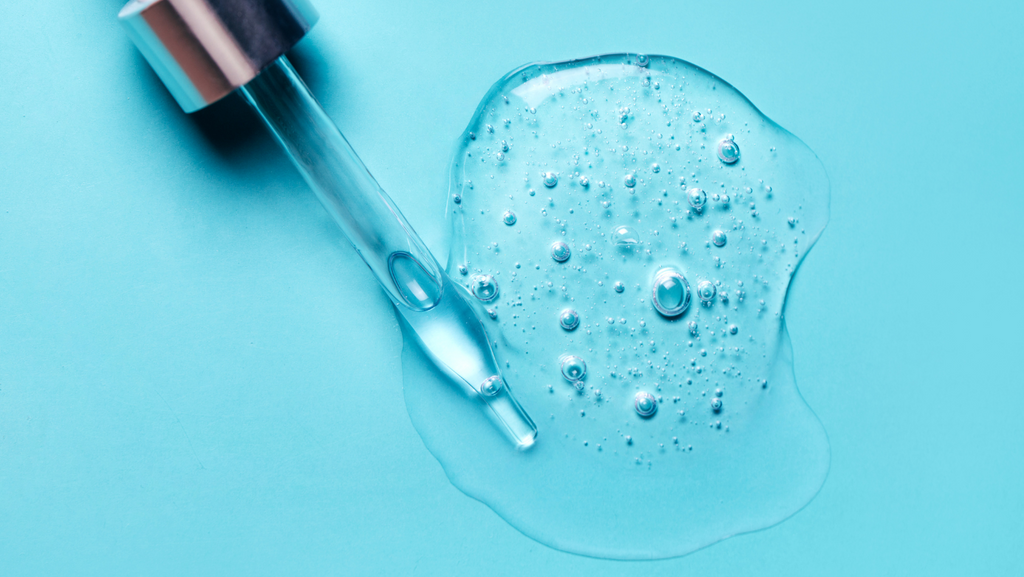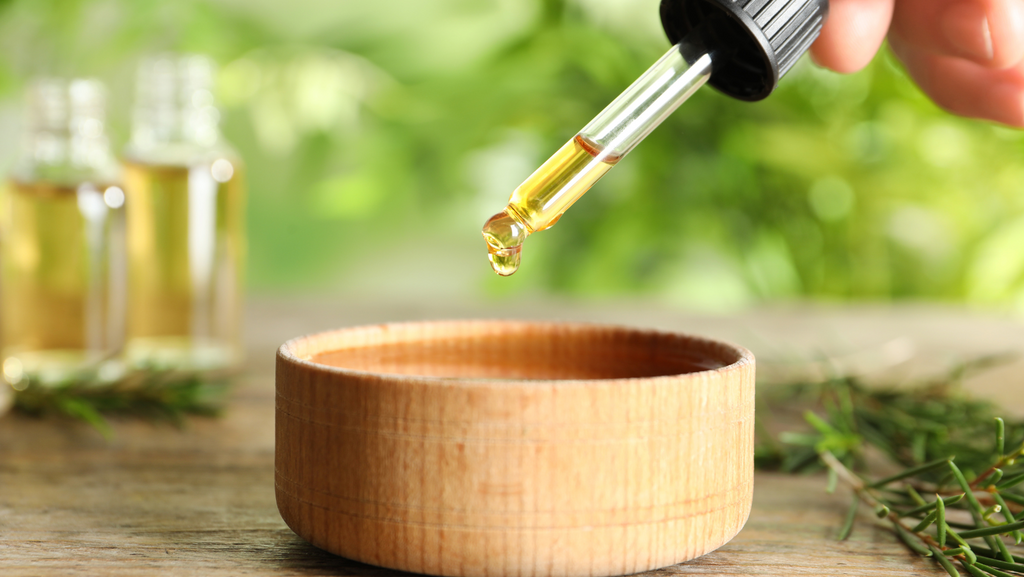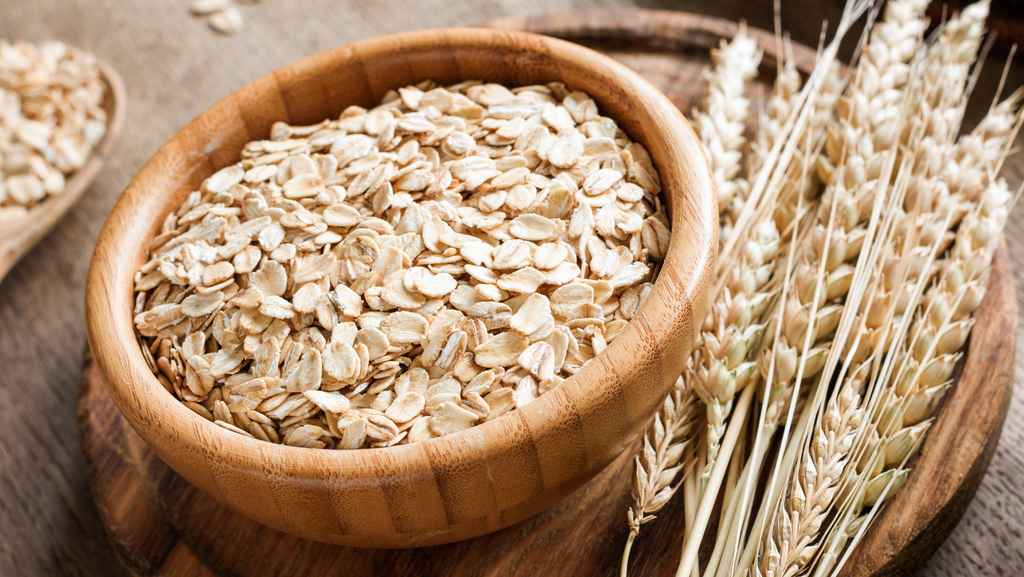How To Make Homemade DIY Skincare Products (Detailed Guide)

Understanding the Basics of Skincare Formulation
Making your own skincare products can be a fun, rewarding, and cost-effective way to pamper your skin and customize your routine. However, it is not as simple as mixing random ingredients in your kitchen.
You need to understand some basic principles of skincare formulation to create safe, effective, and stable products. In this article, we will help you master the basics of DIY skincare and unleash your creativity.
Step-By-Step Guide to Making Your First Skincare Product
If you are interested in making your own skincare products, you might be wondering where to start and what to do. Don’t worry, we are here to help you with this step-by-step guide that will show you how to make your first skincare product from scratch.
You will learn how to select the right ingredients, what equipment you need, and how to follow a simple starter recipe. By the end of this guide, you will have a homemade skincare product that you can use and enjoy.
Selecting the Right Ingredients
The first step to making your own skincare product is to choose the ingredients that suit your skin type and goals.
There are many natural ingredients that you can use to make skincare products, such as oils, butters, waxes, clays, herbs, essential oils, and more. However, not all ingredients are compatible with each other or with your skin.
You need to consider the following factors when selecting your ingredients:
- Skin type: Different skin types have different needs and preferences. For example, if you have oily skin, you might want to use lighter oils that are non-comedogenic and have astringent properties, such as jojoba oil or grapeseed oil. If you have dry skin, you might want to use richer oils that are moisturizing and nourishing, such as avocado oil or shea butter.
- Skin goal: Depending on what you want to achieve with your skincare product, you might want to use ingredients that have specific benefits or functions. For example, if you want to brighten your skin, you might want to use ingredients that have vitamin C or antioxidants, such as lemon juice or rosehip oil. If you want to soothe your skin, you might want to use ingredients that have anti-inflammatory or calming properties, such as aloe vera gel or chamomile tea.
- Ingredient type: There are two main types of ingredients that you can use to make skincare products: water-based and oil-based. Water-based ingredients are those that contain water or can be dissolved in water, such as hydrosols, floral waters, herbal infusions, and juices. Oil-based ingredients are those that do not contain water or cannot be dissolved in water, such as oils, butters, waxes, and essential oils. You need to know the type of your ingredients because they affect how you combine and preserve them.

Recommended Equipment
The second step to making your own skincare product is to gather the equipment that you need. You don’t need any fancy or expensive equipment to make skincare products, but you do need some basic tools that are clean, sterilized, and suitable for the type of product you are making.
Here are some of the equipment that we recommend:
- Measuring tools: You need to measure your ingredients accurately to ensure the right proportions and consistency of your product. You can use measuring spoons, cups, scales, or pipettes, depending on the type and amount of your ingredients.
- Mixing tools: You need to mix your ingredients thoroughly to ensure a smooth and homogeneous product. You can use spoons, whisks, spatulas, or hand blenders, depending on the type and texture of your product.
- Heating tools: You might need to heat some of your ingredients to melt them or to activate their properties. You can use a microwave, a double boiler, or a hot plate, depending on the type and temperature of your ingredients.
- Containers: You need to store your product in a clean, airtight, and dark container to protect it from contamination, oxidation, and degradation. You can use glass jars, bottles, or tubes, depending on the type and quantity of your product.
Simple Starter Recipe
The third step to making your own skincare product is to follow a simple starter recipe that will guide you through the process and give you a basic formula that you can customize later. Here is a simple starter recipe for a moisturizing lotion that you can make with only four ingredients:
- Water phase: 70% distilled water or hydrosol of your choice
- Oil phase: 25% oil or butter of your choice
- Emulsifier: 5% emulsifying wax or lecithin
- Preservative: 0.5% to 1% preservative of your choice
To make the lotion, follow these steps:
- Measure the water phase ingredients and pour them into a heatproof container.
- Measure the oil phase ingredients and pour them into another heatproof container.
- Place both containers in a double boiler and heat them until the oil phase ingredients are melted and both phases are around the same temperature (around 70°C).
- Remove both containers from the heat and slowly pour the water phase into the oil phase while stirring or blending continuously.
- Keep stirring or blending until the mixture is thick and creamy.
- Add the preservative and stir or blend well.
- Transfer the lotion to a clean, sterilized container and let it cool completely.
- Label the container with the name, date, and ingredients of your product.
Congratulations, you have just made your first skincare product! You can use it as it is or add some essential oils, extracts, or other ingredients to customize it to your liking. Enjoy your homemade lotion and have fun experimenting with different ingredients and recipes.
Customizing Skincare for Different Skin Types
Skincare is not a one-size-fits-all solution. Different skin types have different needs and preferences when it comes to choosing the right products and ingredients. In this blog post, we will explore how different ingredients affect various skin types and how to tailor your skincare routine accordingly.
How Different Ingredients Affect Various Skin Types
The skin is the largest organ of the body and it has many functions, such as protecting us from external aggressors, regulating our body temperature, and sensing touch, pain, and temperature. The skin is also composed of different layers, such as the epidermis, the dermis, and the hypodermis, each with its own structure and function.
The skin type is determined by the amount and quality of sebum (oil) produced by the sebaceous glands in the skin. Sebum helps to keep the skin moisturized, lubricated, and protected from bacteria and fungi. However, too much or too little sebum can cause various skin problems, such as dryness, oiliness, acne, or sensitivity.
It is important to understand your skin type and how it reacts to different ingredients, so that you can choose the best skincare products for your skin.
Tailoring for Dry Skin

Dry skin is characterized by a lack of sebum and moisture in the skin, which makes it prone to flaking, cracking, itching, and irritation. Dry skin can be caused by various factors, such as cold weather, low humidity, harsh cleansers, hot showers, aging, or certain medical conditions.
Dry skin needs gentle and hydrating skincare products that can replenish the moisture and lipids in the skin barrier. Some of the best ingredients for dry skin are:
- Hyaluronic acid: This is a natural substance that can hold up to 1000 times its weight in water, making it a powerful moisturizer for the skin. Hyaluronic acid can attract and retain water in the skin, plumping it up and smoothing out fine lines and wrinkles.
- Ceramides: These are fatty molecules that are naturally found in the skin barrier, where they help to seal in moisture and prevent water loss. Ceramides can also protect the skin from environmental damage and inflammation. Using skincare products with ceramides can help to restore and strengthen the skin barrier, improving its hydration and elasticity.
- Glycerin: This is a humectant that can draw water from the air and the deeper layers of the skin, keeping the surface of the skin moist and soft. Glycerin can also improve the skin’s texture and appearance, as well as enhance the penetration of other skincare ingredients.
- Shea butter: This is a natural fat that is extracted from the nuts of the shea tree, native to Africa. Shea butter is rich in fatty acids, vitamins, and antioxidants, which can nourish, moisturize, and soothe dry skin. Shea butter can also form a protective layer on the skin, preventing water loss and environmental damage.
When choosing skincare products for dry skin, it is also important to avoid ingredients that can dry out or irritate the skin, such as alcohol, sulfates, fragrances, or artificial colors. Instead, opt for gentle and natural products that are suitable for your skin type.
Adjusting for Oily Skin

Oily skin is characterized by an excess of sebum production in the skin, which makes it shiny, greasy, and prone to clogged pores, blackheads, and acne. Oily skin can be caused by various factors, such as genetics, hormones, stress, diet, or climate.
Oily skin needs balancing and clarifying skincare products that can regulate the sebum production and prevent the buildup of dirt, bacteria, and dead skin cells in the pores. Some of the best ingredients for oily skin are:
- Salicylic acid: This is a beta-hydroxy acid (BHA) that can exfoliate the skin and unclog the pores, reducing the appearance of blackheads and acne. Salicylic acid can also reduce inflammation and redness, as well as control the oil production in the skin.
- Niacinamide: This is a form of vitamin B3 that can improve the skin’s barrier function, preventing water loss and environmental damage. Niacinamide can also regulate the sebum production, reduce the pore size, and brighten the skin tone.
- Clay: This is a natural substance that can absorb excess oil and impurities from the skin, leaving it clean and matte. Clay can also tighten the pores, improve the skin’s texture, and calm inflammation. There are different types of clay, such as kaolin, bentonite, or green clay, each with its own benefits and properties.
- Tea tree oil: This is an essential oil that is derived from the leaves of the tea tree, native to Australia. Tea tree oil has antibacterial, antifungal, and anti-inflammatory properties, which can help to fight acne-causing bacteria and soothe irritated skin. Tea tree oil can also balance the oil production and reduce the shine in the skin.
When choosing skincare products for oily skin, it is also important to avoid ingredients that can clog the pores or trigger more oil production, such as mineral oil, lanolin, or coconut oil. Instead, opt for lightweight and non-comedogenic products that are suitable for your skin type.
Fine Tuning for Sensitive Skin

Sensitive skin is characterized by a low tolerance to external stimuli, such as chemicals, fragrances, or temperature changes, which can cause reactions such as redness, itching, burning, or stinging. Sensitive skin can be caused by various factors, such as genetics, allergies, skin conditions, or overuse of harsh products.
Sensitive skin needs gentle and soothing skincare products that can calm the skin and reduce inflammation. Some of the best ingredients for sensitive skin are:
- Aloe vera: This is a succulent plant that has been used for centuries for its healing and soothing properties. Aloe vera can hydrate, nourish, and repair the skin, as well as reduce inflammation, irritation, and redness.
- Chamomile: This is a flowering plant that has been used for centuries for its calming and anti-inflammatory properties. Chamomile can soothe, relax, and soften the skin, as well as reduce swelling, itching, and rashes.
- Oatmeal: This is a cereal grain that has been used for centuries for its moisturizing and soothing properties. Oatmeal can hydrate, protect, and repair the skin, as well as reduce inflammation, itching, and flaking.
- Green tea: This is a beverage that is made from the leaves of the Camellia sinensis plant, native to Asia. Green tea is rich in antioxidants, polyphenols, and catechins, which can protect the skin from free radical damage and inflammation. Green tea can also reduce redness, irritation, and sensitivity in the skin.
When choosing skincare products for sensitive skin, it is also important to avoid ingredients that can trigger or worsen the skin’s reactions, such as alcohol, sulfates, fragrances, or artificial colors. Instead, opt for gentle and natural products that are suitable for your skin type.
Balancing for Combination Skin

Combination skin is characterized by having both dry and oily areas in the skin, usually with a dry or normal cheek area and an oily T-zone (forehead, nose, and chin). Combination skin can be caused by various factors, such as genetics, hormones, climate, or skincare products.
Combination skin needs balancing and hydrating skincare products that can address the different needs of the skin. Some of the best ingredients for combination skin are:
- Jojoba oil: This is a liquid wax that is extracted from the seeds of the jojoba plant, native to North America. Jojoba oil is similar to the skin’s natural sebum, which makes it an excellent moisturizer and regulator for the skin. Jojoba oil can hydrate the dry areas, balance the oily areas, and prevent the clogging of pores.
- Rose water: This is a liquid that is made from the petals of the rose flower, native to Asia and Europe. Rose water has astringent, anti-inflammatory, and antibacterial properties, which can help to tone, refresh, and cleanse the skin. Rose water can also hydrate, soothe, and balance the skin’s pH level.
- Grape seed extract: This is a substance that is derived from the seeds of the grape fruit, native to Asia and Europe. Grape seed extract is rich in antioxidants, flavonoids, and resveratrol, which can protect the skin from free radical damage and aging. Grape seed extract can also improve the skin’s elasticity, firmness, and brightness.
- Lavender oil: This is an essential oil that is derived from the flowers of the lavender plant, native to Europe and Africa. Lavender oil has antiseptic, anti-inflammatory, and calming properties, which can help to heal, soothe, and relax the skin. Lavender oil can also balance the oil production and reduce the shine in the skin.
When choosing skincare products for combination skin, it is also important to avoid ingredients that can dry out or irritate the skin, such as alcohol, sulfates, fragrances, or artificial colors. Instead, opt for gentle and natural products that are suitable for your skin type.
Troubleshooting Common Skincare Formulation Challenges
If you love making your own skincare products, you may have encountered some issues with your formulations, such as separation, inconsistent texture, or adverse reactions.
These challenges can affect the quality, performance, and safety of your products, as well as your satisfaction and enjoyment. In this blog post, we will explain why these challenges happen and how to fix them.
Separation
Separation is when the different phases of your product (such as oil and water) do not mix well and separate into layers. This can make your product look unappealing, feel uneven, and work poorly.
To prevent separation, you need to use a compatible and sufficient emulsifier, which is a substance that helps to bind oil and water together. You also need to mix your product properly, using the right speed, time, and temperature.
Inconsistent Texture
Inconsistent texture is when your product does not have a smooth, uniform, and pleasant feel on the skin. This can make your product hard to apply, absorb, and use.
To prevent inconsistent texture, you need to use a compatible and sufficient preservative, which is a substance that helps to prevent microbial growth and spoilage in your product. You also need to store your product properly, using a suitable container and environment.
Adverse Reactions
Adverse reactions are when your product causes some unwanted effects on your skin, such as irritation, inflammation, allergy, or sensitivity. This can make your skin uncomfortable, unhealthy, and unattractive.
To prevent adverse reactions, you need to use compatible and sufficient ingredients, which are substances that suit your skin type and condition. You also need to test your product before using it, using a small patch of skin.
Frequently Asked Questions on Making Your Own Skin Care Products
Making your own skin care products can be a fun and rewarding hobby, but it can also raise some questions and doubts. In this blog post, we will answer some of the most common questions that people have about DIY skin care, such as:
Is It Cheaper to Make Your Own Skin Care Products?
The answer to this question depends on several factors, such as the type and quality of the ingredients, the amount and frequency of use, and the comparison with similar products on the market.
Generally, making your own skin care products can be cheaper than buying them, especially if you use simple, natural, and readily available ingredients, such as oils, butters, herbs, and honey.
However, if you use more expensive, exotic, or rare ingredients, such as essential oils, hydrosols, or extracts, the cost may be higher than buying ready-made products. Additionally, if you make large batches of products that expire quickly, such as water-based products, you may end up wasting some of them, which can increase the cost per use.
Therefore, you need to consider your budget, preferences, and needs when deciding whether to make or buy your skin care products.
How Do You Make Homemade Moisturizer?
Making your own moisturizer can be easy and fun, as long as you follow some basic steps and guidelines. Here is a simple recipe for a homemade moisturizer that you can try:
- Ingredients:
- 1/4 cup of shea butter
- 2 tablespoons of jojoba oil
- 1 teaspoon of vitamin E oil
- 10 drops of lavender essential oil
- Instructions:
- Melt the shea butter in a double boiler over low heat, stirring occasionally.
- Add the jojoba oil and vitamin E oil and mix well.
- Remove from heat and let it cool slightly.
- Add the lavender essential oil and stir well.
- Transfer the mixture to a clean jar or container and let it solidify in the fridge or at room temperature.
- Use a small amount of the moisturizer on your face and body as needed.
This moisturizer is suitable for all skin types, as it is nourishing, hydrating, and soothing. You can customize it by changing the oils, butters, or essential oils according to your skin type and preferences.
For example, you can use coconut oil, cocoa butter, or rosehip oil for dry skin, grapeseed oil, mango butter, or tea tree oil for oily skin, or almond oil, avocado butter, or chamomile oil for sensitive skin.
What Is the Best DIY Skin Care Routine?
The best DIY skin care routine is the one that works for your skin type, condition, and goals. However, a general skin care routine that you can follow consists of four steps: cleansing, toning, moisturizing, and protecting. Here is how you can do each step with your own products:
- Cleansing: Cleansing is the first and most important step of any skin care routine, as it helps to remove dirt, oil, makeup, and impurities from your skin. You can make your own cleanser by using natural ingredients, such as honey, yogurt, oatmeal, or clay. For example, you can mix 1 tablespoon of honey with 1 teaspoon of yogurt and apply it to your face, massaging gently. Rinse with warm water and pat dry.
- Toning: Toning is the second step of any skin care routine, as it helps to balance the pH level, refresh, and prepare your skin for the next steps. You can make your own toner by using natural ingredients, such as rose water, apple cider vinegar, or green tea. For example, you can brew 1 cup of green tea and let it cool. Add 1 teaspoon of apple cider vinegar and 10 drops of rose water and mix well. Transfer to a spray bottle and spritz on your face after cleansing.
- Moisturizing: Moisturizing is the third step of any skin care routine, as it helps to hydrate, nourish, and protect your skin. You can make your own moisturizer by using natural ingredients, such as oils, butters, or aloe vera. For example, you can use the homemade moisturizer recipe that we shared above, or you can simply apply a few drops of your favorite oil, such as jojoba, argan, or olive, to your face and massage gently.
- Protecting: Protecting is the fourth and final step of any skin care routine, as it helps to shield your skin from the harmful effects of the sun, pollution, and other environmental factors. You can make your own sunscreen by using natural ingredients, such as zinc oxide, coconut oil, or beeswax. For example, you can melt 1/4 cup of coconut oil and 2 tablespoons of beeswax in a double boiler over low heat, stirring occasionally. Add 2 tablespoons of zinc oxide and mix well. Remove from heat and let it cool slightly. Transfer to a clean jar or container and let it solidify in the fridge or at room temperature. Use a small amount of the sunscreen on your face and body before going outside.
This skin care routine is suitable for most skin types, as it is gentle, natural, and effective. You can customize it by changing the ingredients, products, or frequency according to your skin type and preferences.
You can use a different cleanser, toner, moisturizer, or sunscreen for your skin type, or you can add or skip some steps depending on your skin condition and goals.
Conclusion: How to Make Skincare Products at Home
Making your own skincare products at home can be a fun, rewarding, and cost-effective way to pamper your skin. You can use natural ingredients that are gentle, nourishing, and eco-friendly. You can also customize your products to suit your skin type, preferences, and needs. Whether you want to make a moisturizer, a scrub, a mask, or a toner, you can find simple recipes and tips online or in books. With some creativity and experimentation, you can create your own skincare routine that will make you feel beautiful and confident
Related Posts
Sign Up






